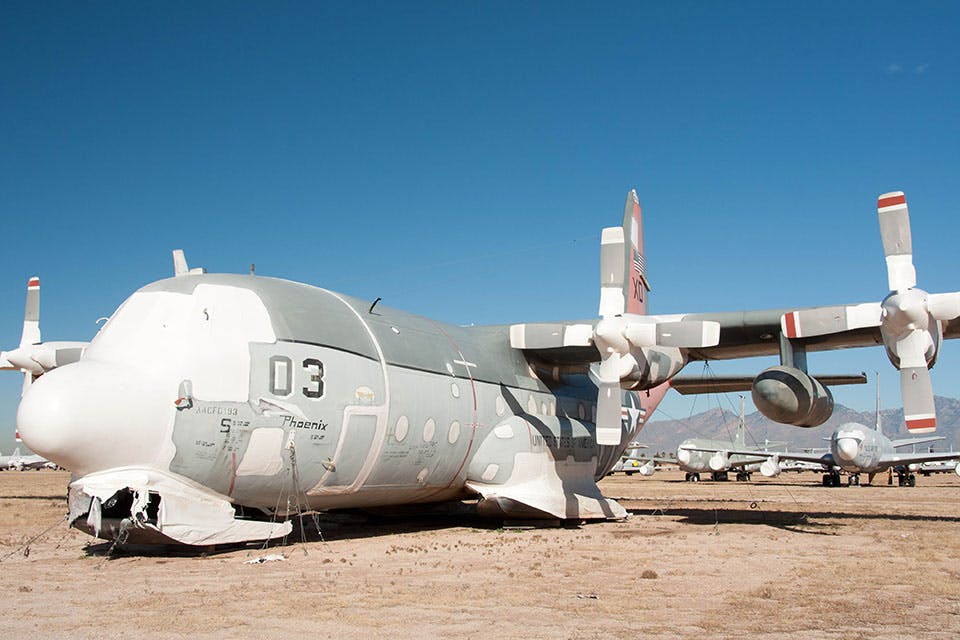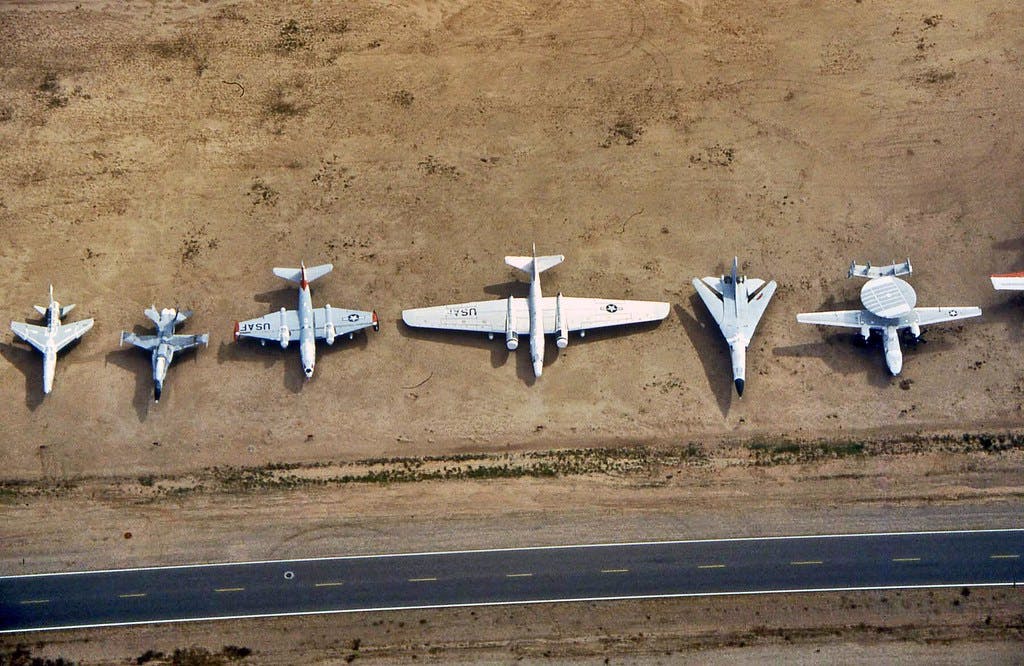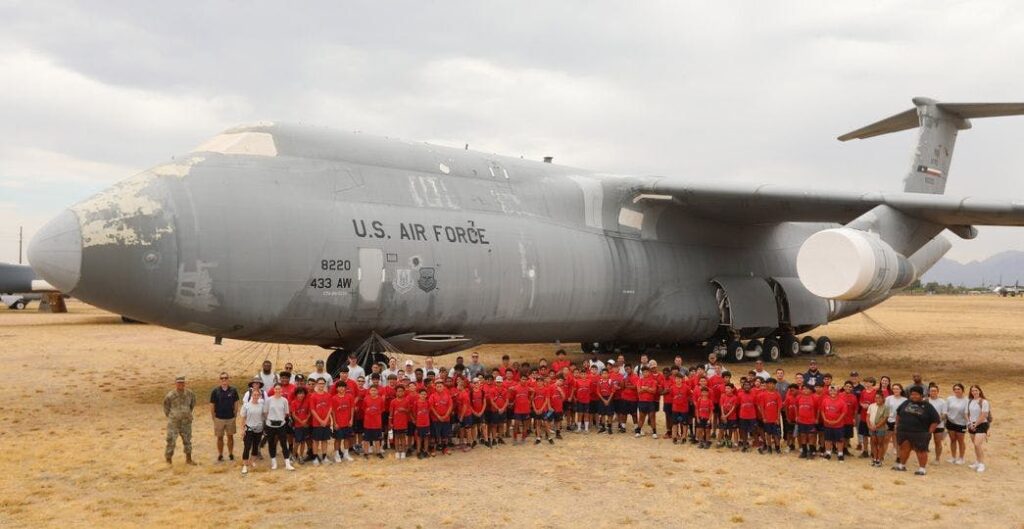In the Arizona desert near Tucson sprawls a one-of-a-kind retirement community – but it’s not for retirees; it’s a literal airplane graveyard. It’s for historic military aircraft that have flown their final missions. This aviation “elephant’s graveyard” is called the 309th Aerospace Maintenance and Regeneration Group, or AMARG.

Over 4,400 retired planes from the Air Force, Navy, Marines, Army, Coast Guard, and NASA reside here in the dry Southwest climate. As the largest airplane boneyard in the world, AMARG or the airplane graveyard provides critical long-term storage, maintenance, and parts reclamation for the nation’s excess military fleet.
From Post-War Origins to Modern Operations
AMARG’s origins trace back to immediately after World War II. With massive surpluses of aircraft after winning the war, the Army Air Forces urgently needed storage space. Davis-Monthan Air Force Base is near Tucson. Engineers selected this spot because of the arid desert climate, alkaline soil, and minimal corrosion issues..
In 1946, the base rapidly filled up with over 600 B-29 Superfortress bombers and 200 C-47 Skytrain transports. The military reactivated some for the Korean War, while workers scrapped others for parts or dealers sold them off.
. This set the precedent for an ongoing aircraft boneyard at Davis-Monthan’s sprawling facilities.

Throughout the Cold War era, the base’s plane storage operations continued expanding to consolidate obsolete models from all military branches. As new generations of jets and helicopters replaced propeller-driven aircraft, the boneyard provided an economical way to house the excess airfleet.
Today, with about 550 employees, AMARG’s airport graveyard manages a staggering inventory of historic and modern aircraft. Its workload includes reclaiming parts, supporting museum displays, and converting planes to target drones.
Ideal Conditions in the Desert
Hot, arid Arizona makes a perfect environment for storing aircraft in the long term. The low humidity and dry desert climate minimize corrosion issues that can plague planes in other environments.

Crews can simply tow planes around on the hard, alkaline soil without sinking or getting stuck – eliminating the need for costly concrete ramps – thanks to just 11 inches of rainfall annually. The lack of precipitation also reduces problems with rust and frost damage.
While Arizona’s abundance of sunshine necessitates careful sealing of the aircraft from heat, dust and sunlight, the Southwest climate still offers ideal overall conditions for preserving mothballed planes indefinitely.
Massive Inventory and Meticulous Maintenance
The AMARG facility encompasses a sprawling 2,600 acres – about 4 square miles. The retired aircraft are neatly lined up in rows and formations on the compacted desert soil, contrasting with typical crowded flight line parking.

The airport graveyard’s inventory includes historic planes such as WWII-era B-29 Superfortresses and B-52 Stratofortresses from the Cold War era. Iconic fighter jets like F-4 Phantoms, F-14 Tomcats, and F-16 Fighting Falcons are also well represented.
While some aircraft are kept in near flight-ready condition, others are designated for reclamation of parts. Technicians continually assess and preserve select planes based on their storage status and needs.
In addition to military warplanes, the AMARG boneyard contains rare prototypes, trainers, test aircraft, and even NASA’s remaining space shuttles pre-museum delivery.

Visiting the Legendary Boneyard
As an active military base, public access to Davis-Monthan and the AMARG tour requires advanced planning and restrictions. Guests must have ID and U.S. citizenship or prior approval to enter the base.
But for aviation buffs, the extra logistics are worth it. The 2-3 hour bus tour provides a unique up-close view of famous planes like the B-52 bomber and F-14 Tomcat fighter. Visitors can also spot aircraft from the Air Force, Navy, Marines, Army, Coast Guard, and NASA.

Walking the grounds, one can’t help but feel the ghosts of aviation history all around. The neatly lined aircraft stand as testaments to engineering ingenuity and the pilots who brought them to life. Their faded squadron insignia hint at stories waiting to be retold.
For over 75 years now, this Arizona aircraft boneyard has allowed the Armed Forces to economically store its retired fleet in ideal conditions. Carefully preserved, these dormant planes seem to echo with memories of their glory days soaring aloft.


 Additional Facts
Additional Facts
$557.1 Million
In 2010, the 309th reclaimed 13,342 parts with an original value of $557.1 million.
16,000
More than 16,000 commercial aircraft have been retired over the past 35 years according to IATA; with an additional 11,000 to occur over the next 10 years.
59,531
The total number of excess Air Force aircraft disposed of for the years immediately following WWII.



